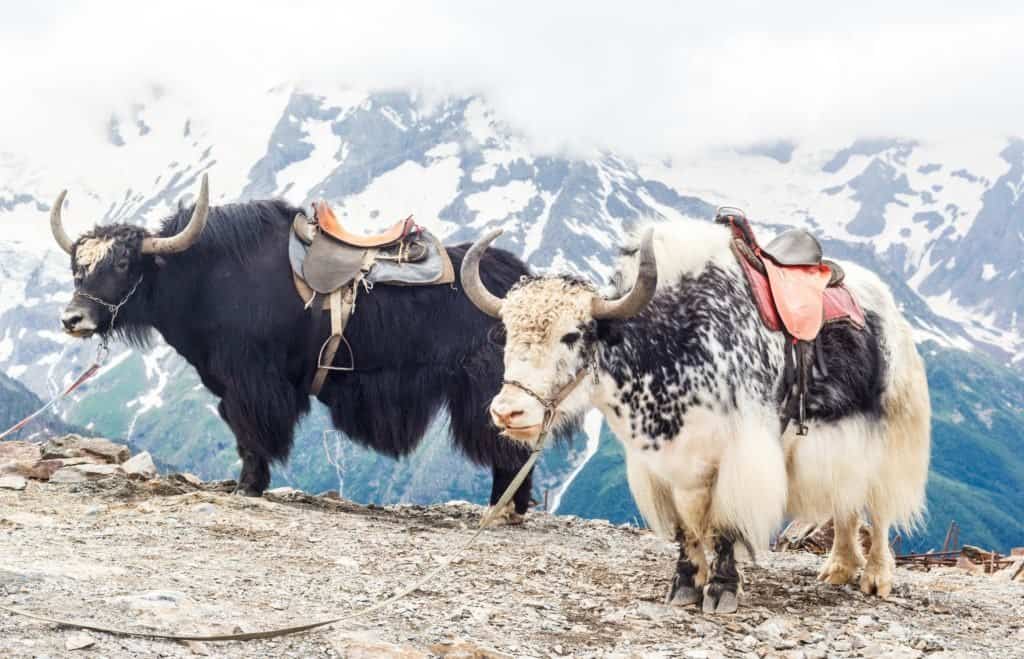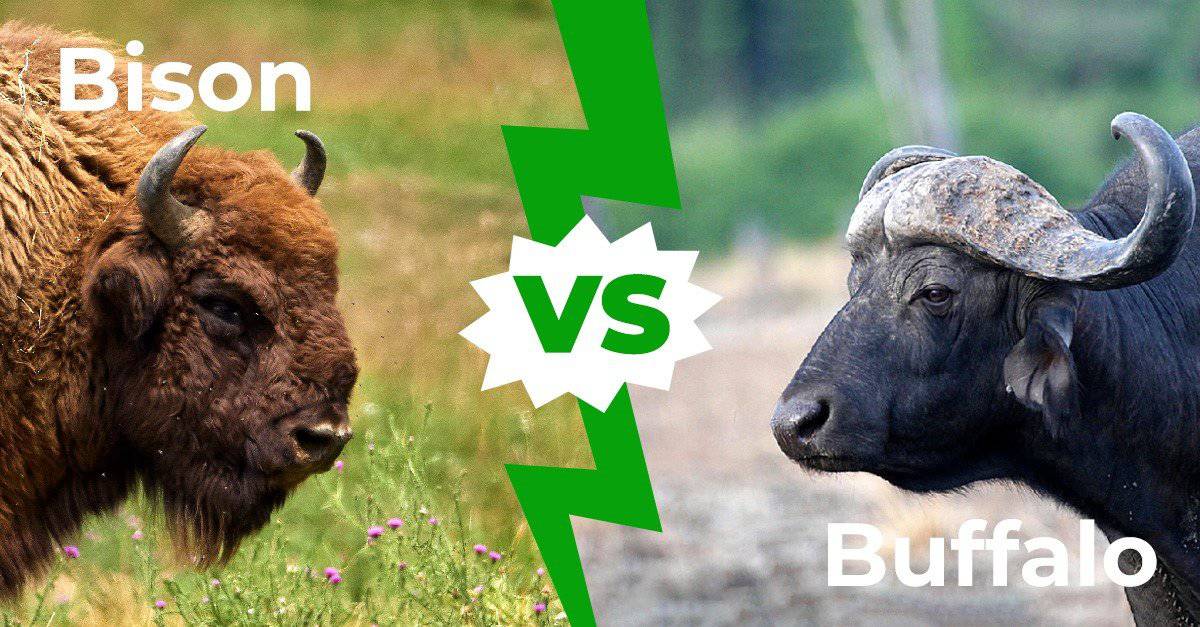Have you ever found yourself gazing at an imposing, shaggy beast in a zoo or on the plains and wondered, “Is that a buffalo, a bison, or a yak?” These three magnificent creatures often get confused, and it’s easy to see why. They share a similar build, with thick coats, sturdy legs, and horns that seem to emanate power. But beneath the surface, there are striking differences. Let’s delve into the fascinating world of these bovine giants, separating fact from fiction and uncovering the unique characteristics that make each one stand apart.

Image: deborahsilvermusic.com
These magnificent creatures, while often mistakenly lumped together, are more than just oversized bovines; they are icons of the wild, representing strength, resilience, and the untamed beauty of nature. Understanding these differences is not just about satisfying our curiosity; it’s about appreciating the diverse tapestry of life on Earth and recognizing the unique roles each of these creatures plays in their respective ecosystems.
Navigating the Bovine Maze: Bison, Buffalo, and Yak
The first step in understanding these majestic creatures is to dispel a common misconception: bison and buffalo are not the same animal. While the terms are often used interchangeably, the “buffalo” we typically think of – the African buffalo – is a completely different species, with its own fascinating characteristics. This article will focus on the North American bison and the yak, exploring their origins, physical attributes, and cultural significance.
The American Bison: A True Giant of the Plains
The North American bison (Bison bison) is a majestic symbol of the Wild West, its massive form once roaming in colossal herds across the Great Plains. Standing tall with a humped shoulder, a shaggy coat, and horns that curve outwards like a crescent moon, the bison is a sight to behold.
Historical Significance: The bison played an integral role in the lives of Native Americans, providing food, clothing, shelter, and tools. Their presence shaped the landscape and ecosystem, impacting the livelihoods of entire communities. Unfortunately, the bison population faced a devastating decline in the 19th century due to overhunting and habitat loss, but conservation efforts have helped to bring these magnificent creatures back from the brink of extinction.
Physical Characteristics:
- Size: Bison are truly giants, with males averaging 1,500-2,000 pounds and females weighing around 1,000 pounds. Their stature is imposing, with a strong, muscular build.
- Coat: Bison sport a thick, shaggy coat that provides insulation in cold climates. The coat is typically dark brown, but can range from black to yellowish-brown.
- Horns: The horns of bison are heavy, bony structures that curve outwards. They serve as a formidable defense mechanism and play a role in territorial battles.
- Habitat: Bison prefer open grasslands and prairies, where they can roam freely and graze on grasses.
The Yak: High Altitude Survivor
Native to the high plateaus and mountains of Central Asia, the yak (Bos grunniens) is a hardy, long-haired creature adapted to survive in extreme conditions. While sharing some physical similarities with the bison, the yak is distinct in its own right.
Unique Adaptations: Yaks have evolved to thrive in the harsh, high-altitude environments of the Himalayas and Tibetan Plateau. Their thick coats, adapted to withstand cold temperatures and harsh weather, are a defining characteristic. Their respiratory system is also uniquely designed to function efficiently in thin air.
Physical Characteristics:
- Size: Yaks are smaller than bison, with males reaching around 1,200 pounds and females weighing close to 800 pounds. Despite their smaller size, they are powerful and agile.
- Coat: The yak’s coat is long, dense, and shaggy, offering exceptional protection from cold winds and blizzards. It can range in color from black to white, with brown and reddish-brown variations.
- Horns: Like bison, yaks have heavy, curved horns that are useful for defense and dominance displays.
- Habitat: Yaks are primarily found in high alpine meadows and grasslands, where they graze on grasses, herbs, and lichens.

Image: python.keystoneuniformcap.com
The African Buffalo: A Different Beast
Although often grouped with bison and yak, the African buffalo (Syncerus caffer) is a separate and distinct species. While sharing some physical traits, the African buffalo differs significantly in terms of its habitat, behavior, and even its temperament.
Distinguishing Features:
- Physical Characteristics: African buffalo are smaller than bison but larger than yaks, with a stockier build and a shorter, more compact head. Their horns are typically dark, massive, and spread out from the center of their forehead, forming an almost helmet-like structure.
- Habitat: Unlike bison and yak, the African buffalo prefers wooded savannas, grasslands, and river valleys. They are social creatures, living in large herds led by a dominant male.
- Temperament: Known for their unpredictable nature, African buffalo are considered to be highly dangerous, especially when threatened or wounded. They are known to charge with incredible speed and ferocity.
Beyond the Physical: Understanding the Cultural Significance
The bison, yak, and African buffalo are not just impressive creatures; they play a significant role in the cultures and traditions of the communities that share their habitats.
The Bison: A Symbol of Strength and Resilience
The bison’s symbolic significance for Native American tribes is profound, often representing strength, power, and resilience. Its connection to the land and its importance as a source of sustenance have made it a central figure in storytelling, artwork, and ceremonial practices. Today, the bison continues to hold a special place in the hearts of many, symbolizing the preservation of cultural heritage and the respect for the natural world.
The Yak: Essential to Tibetan Culture
For the Tibetan people, the yak is more than just an animal; it is a lifeline. Yaks provide milk, butter, cheese, and meat, their dung is used as fuel, and their hides are used for clothing and tents. They are also crucial for transportation, particularly in the treacherous mountain terrain. The yak is an integral part of Tibetan culture, deeply intertwined with daily life and traditions.
The African Buffalo: A Powerful Force of Nature
In African cultures, the buffalo is both revered and feared. Its immense strength and unpredictable nature command respect, but its unpredictable behavior also instills caution. The buffalo is a symbol of the raw power of nature, reminding us of the delicate balance that exists between humans and the wild.
Bison Vs Buffalo Vs Yak
The Future of These Giants: Conservation Efforts
The future of bison, yak, and African buffalo is intertwined with human actions. Conservation efforts are crucial to ensuring their survival in the face of habitat loss, climate change, and other threats.
For bison, conservation efforts have focused on restoring their historic range, establishing protected areas, and promoting sustainable management practices. These efforts are vital for the long-term health of bison populations and the preservation of their role in the ecosystem.
For yaks, conservation is crucial in the context of climate change and the increasing pressure on their high-altitude habitat. Efforts are underway to promote sustainable yak herding practices, protect their grazing grounds, and safeguard their genetic diversity.
Similarly, African buffalo are facing challenges due to habitat loss, poaching, and disease. Conservation initiatives focus on protecting their core populations, managing human-wildlife conflict, and promoting sustainable land management techniques.
In Conclusion, the bison, yak, and African buffalo are magnificent creatures, each with unique adaptations and cultural significance. Understanding their differences and appreciating their shared capacity to inspire awe and respect is a testament to the incredible diversity of the natural world. Let us strive to protect these giants, ensure their future, and honor the legacy they represent.






